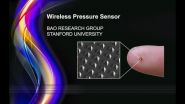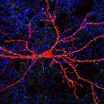(Press-News.org) Philadelphia, PA, October 9, 2014 – Researchers at Sanford-Burnham Medical Research Institute have identified a set of RNA molecules that are detectable in tissue samples and urine of prostate cancer patients but not in normal healthy individuals. The study sets the stage for the development of more sensitive and specific noninvasive tests for prostate cancer than those currently available, which could result in fewer unnecessary prostate biopsies with less treatment-related morbidity, according to a new study in The Journal of Molecular Diagnostics.
According to the American Cancer Society, prostate cancer is the second most common type of cancer in American men (after skin cancer), and the second-leading cause of cancer-related death in men (after lung cancer). In 2014, more than 230,000 new cases of prostate cancer will be diagnosed. One in seven American men will get prostate cancer during his lifetime, and one in 36 will die from it. Since most men with prostate cancer have indolent (nonaggressive) disease for which conservative therapy or surveillance is appropriate, the clinical challenge is not only how to identify those with prostate cancer, but also how to distinguish between those who would benefit from surgical or other aggressive treatment from those who would not.
Prostate cancer is primarily detected and monitored by testing for high concentrations of prostate-specific antigen (PSA) in blood samples. High PSA levels are often followed by a biopsy to confirm the presence of cancer and whether it is slow growing or aggressive.
"While elevated PSA can be an alert to a lethal cancer, it can also detect less aggressive cancers that may never do any harm," said Vipul Patel, MD, medical director of the Global Robotics Institute at Florida Hospital in Orlando. "Moreover, only 25 percent of men with raised PSA levels that have a biopsy actually have prostate cancer. Prostate cancer needs to be screened for; we just need to find a better marker."
The researchers believe that they have identified a group of RNA molecules – known as long noncoding RNAs (lncRNAs) – that hold the potential for serving as better prognostic markers for prostate cancer. lncRNAs were dismissed until recently by scientists as non-functional noise in the genome. However, they are now thought to regulate normal cellular development and are increasingly reported as contributing to a range of diseases, including cancer.
"We have identified a set of lncRNAs that appear to have an important role in prostate cancer diagnostics," commented Ranjan J. Perera, PhD, associate professor and scientific director of Analytical Genomics and Bioinformatics at Sanford-Burnham's Lake Nona campus in Orlando. "The findings advance our understanding of the role of lncRNAs in cancer biology and, importantly, broaden the opportunity to use lncRNAs as biomarkers to detect prostate cancer."
The study profiled the lncRNAs in three distinct groups: (1) human prostate cancer cell lines and normal prostate epithelial cells; (2) prostate adenocarcinoma tissue samples and matched normal tissue samples; and (3) urine samples from patients with prostate cancer or benign prostate hyperplasia, and normal healthy individuals. In each case, the lncRNAs were elevated in prostate cancer patient samples, but not in patients with benign prostate hyperplasia or normal healthy individuals.
One advantage of lncRNAs is that the molecules can be detected in urine samples, which are more easily available than blood tests. One lncRNA, PCA3, was recently commercialized in a urine test to identify which men suspected of having prostate cancer should undergo repeat prostate biopsy. However, discrepancies exist between PCA3 levels and clinicopathologic features, noted Dr. Perera. In the current study, PCA3 was detected in some, but not all of the study samples, suggesting that reliance on a single biomarker may be insufficient for prostate cancer detection, whereas combining additional markers may increase the specificity and sensitivity of the test.
"There is a tremendous unmet clinical need for better non-invasive screening tools for early detection of prostate cancer to reduce the overtreatment and morbidity of this disease," added Dr. Patel. "Our findings represent a promising approach to meet this demand."
TECHNICAL DETAILS OF THE STUDY
The goal of the first experiment was to see whether lncRNAs are differentially expressed in prostate cancer by measuring total RNA from prostate cancer cell lines and normal epithelial prostatic cells using NCode human ncRNA array and SurePrint G3 human lncRNA microarrays. Hierarchical clustering revealed distinguishable lncRNA expression profiles. Thirty lncRNAs were up-regulated and the expression levels of three top-ranking candidates [XLOC_007697, LOC100287482, and AK024556 (also known as SPRY4-IT1)] were confirmed in prostate cancer cell lines by quantitative real-time polymerase chain reaction (qPCR) analysis. The SPRY4-IT1 was found to be up-regulated more than 100-fold in PC3 cells compared with prostatic epithelial cells.
In a second experiment, lncRNA expression was compared in pooled prostate cancer tissue samples and matched normal tissues from 10 frozen biopsy specimens. Hierarchical clustering of the differentially expressed lncRNAs was observed and 10 up-regulated lncRNAs were detected using microarrays. An additional set of 18 prostate cancer tissue samples was analyzed by qPCR and five lncRNAs were found to be significantly higher in prostate tumor tissues compared with matched normal tissues.
Researchers used qPCR to analyze total RNA isolated from urine in another experiment. Urine was collected from 13 prostate cancer patients and 14 healthy controls. All six lncRNAs were found to be significantly up-regulated in the urine samples from the prostate cancer patients compared with normal patient controls, whereas there were no differences between normal and benign prostatic hyperplasia patient samples.
In other studies focused particularly on SPRY4-IT1, using both qPCR and highly sensitive droplet digital PCR, expression of SPRY-IT1 was found to be increased in 16 of 18 (89 percent) tissue samples from patients with prostatic adenocarcinoma, compared to normal tissue samples. The researchers developed chromogenic in situ hybridization (CISH) techniques to visualize SPRY4-IT1 expression in cancerous and matched normal tissue. Intense staining was seen in all adenocarcinoma samples, but not in normal prostatic tissue. Finally, the investigators showed that reduction of SPRY4-IT1 in prostate cancer cells through the use of small interfering RNA (siRNA) leads to decreased cell viability and cellular invasion as well as increased apoptosis, similar to what is seen in melanoma cells.
INFORMATION:
Stanford engineers have invented a wireless pressure sensor that has already been used to measure brain pressure in lab mice with brain injuries.
The underlying technology has such broad potential that it could one day be used to create skin-like materials that can sense pressure, leading to prosthetic devices with the electronic equivalent of a sense of touch.
A nine-member research team led by Chemical Engineering Professor Zhenan Bao detailed two medical applications of this technology in Nature Communications.
In one simple demonstration they used this wireless ...
Researchers from the University of Melbourne have established how two diseases that present in similar ways are in fact quite different.
Progressive Supranuclear palsy and Parkinson's Disease have overlapping symptoms but remain difficult to distinguish.
However, a first ever paper on the topic published in the Journal of Neuropsychology (British Psychological Society publication) now suggests that people with PSP experience more severe and extensive cognitive impairments than those with PD early on.
The study indicates that patients with PSP experience more severe ...
The initial benefits of an outpatient antimicrobial stewardship intervention designed to reduce the rate of inappropriate antibiotic prescriptions were lost after discontinuation of audit and feedback to clinicians, according to a study published in JAMA. The study is being released early online to coincide with the IDWeek 2014 meeting.
Antibiotics are the most frequently prescribed medications for children; most are prescribed for outpatient acute respiratory tract infections. Because antibiotic prescribing is often inappropriate, Jeffrey S. Gerber, M.D., Ph.D., of ...
The so-called Signal Transducers and Activators of Transcription, or STATs, are key components of many different signalling pathways. Not surprisingly, then, when something goes wrong with their regulation the consequences can be severe and many types of cancer are known to be associated with increased activities of one or more STAT protein. STAT3 is a frequent culprit and is often found to be activated in tumour cells.
Considerable efforts are going into developing inhibitors of STAT3 for use in cancer therapy but it is unclear whether these will turn out to be suitable ...
New research out of Queen's University could give insight into what terrorists are thinking. Professor David Skillicorn (School of Computing) analyzed language used in two jihadist magazines to gain intelligence about terrorist strategy.
He examined the language used in Inspire, an online magazine reportedly published by al-Qaida in the Arabian Peninsula, which aims to increase the availability of their message, and the Islamic State News published by ISIS. Inspire has attracted attention because of its goal of attracting lone-wolf attacks in Western countries.
"The payoff ...
The immunosuppressive drug fingolimod (trade name: Gilenya) was approved for an expanded therapeutic indication in May 2014: It is now also available for adults with highly active relapsing remitting multiple sclerosis (RRMS) who had received other pretreatment than interferon beta (IFN-β). In an early benefit assessment pursuant to the Act on the Reform of the Market for Medicinal Products (AMNOG), the German Institute for Quality and Efficiency in Health Care (IQWiG) examined whether the drug offers an added benefit over the appropriate comparator therapy in this ...
A previously unknown mechanism through which the brain produces new nerve cells after a stroke has been discovered at Lund University and Karolinska Institute in Sweden. The findings have been published in the journal SCIENCE.
A stroke is caused by a blood clot blocking a blood vessel in the brain, which leads to an interruption of blood flow and therefore a shortage of oxygen. Many nerve cells die, resulting in motor, sensory and cognitive problems.
The researchers have shown that following an induced stroke in mice, support cells, so-called astrocytes, start to form ...
A novel technique which reduces image degradation caused by respiratory motion during a PET scan was developed in a recent study at the University of Eastern Finland. PET scanning is routinely used to detect cancer and heart conditions. The new technique presented in the PhD thesis of Tuomas Koivumäki, MSc (Tech.), is based on bioimpedance measurement and it allows for image reconstruction at a specific phase of the patient's breathing pattern. This, in turn, makes it possible to reduce image degradation caused by motion.
In the future, the newly developed technique ...
New Orleans, LA – A special study using data from LSU Health New Orleans School of Public Health's Louisiana Tumor Registry has found that colorectal cancer incidence rates in the Louisiana Acadian parishes are among the highest in the United States. This study appears to be the first to identify a high rate of cancer in a large, regional, US founder population, raising the possibility of a genetic predisposition. Alternatively, an unidentified, robust environmental risk factor may be present. The paper is published online in Clinical and Translational Gastroenterology, ...
A small, "empty" space teeming with activity: a synapse is a complex structure where the neural (electrical) signal from the presynaptic neuron, as it travels towards its target –a muscle, a gland or another neuron – turns into a chemical signal capable of crossing the synaptic space before becoming electrical again once on the other side. A synapse is a "dynamic" space not only because of the endless work that goes on there, but also for its ability to change its action over time (synaptic plasticity) as a result of either normal physiological processes (e.g., ...


